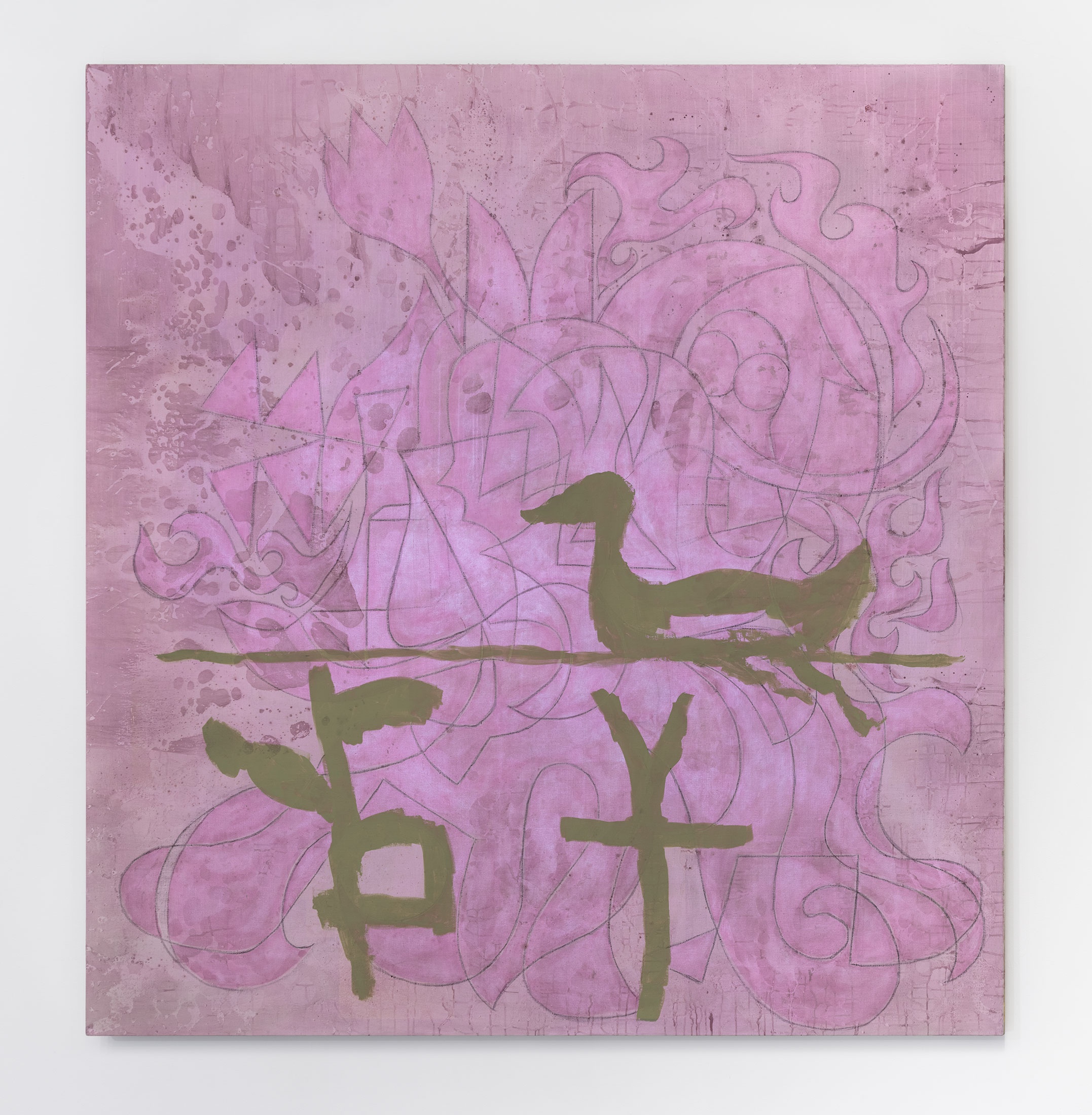Charline von Heyl

Calm Above is characteristic of von Heyl’s material dexterity, listing acrylic, oil, charcoal, and crayon among its mediums. It serves as a useful object lesson in the artist’s figurative ambiguity and inexplicable juxtapositions of visual cues, in her flashes of wit and confusion of signs. Across the canvas, a horizontal line is transcribed in indeterminate colour on which the image of a duck floats above two obscure glyphs. Behind these, vaguely cartoonish pink shapes are defined in thin black outline. Behind those, a fluid transparent wash in muddy pastel recalls its application in drips, spills, and rivulets. The picture plane remains shallow, however layered. To von Heyl, such seemingly disparate modes of image-making – colour field, hard-edged abstraction, graphic emblem – extend from a single compositional element:
At the root of my painting is the line. As an outline, line defines a shape. In repetition, line creates pattern. Sometimes colour just comes from filling in between the lines... It comes from a much more graphic understanding of what can happen on a surface. It’s always the line that leads me to something. When I put colour into my paintings, it’s almost always to enhance lines, or to erase lines, or produce effects that turn illustration into a painting. That’s also the reason why the paintings stay flat.
b.1960, Mainz
That language is Charline von Heyl’s primary preoccupation introduces a certain irony to any attempts at defining her practice – if only because language reveals itself lacking in describing it. But perhaps this is precisely the point. The artist detests the familiar formula placing her work between abstraction and figuration, however useful it might be to the writer. The word pastiche is similarly regarded with suspicion (though again, her work, all surface and quotations, certainly inspires the word in its postmodern usage). Phrases von Heyl might rather use: authentic falseness, generative stupidity, necessary bewilderment, visual cannibalism. Her approach is not one of appropriation – another word denied the writer – but rather follows moves borrowed from “a ferocious input of images” (pop culture, art history, mass media) to arrive at “a new image that stands for itself as fact.” She never proceeds from a predetermined idea, engaging instead a rigorous, process-driven enquiry that plays out across her large-scale canvases. “I’m certainly not interested in depicting anything, but neither am I interested in abstraction for its own sake,” von Heyl says. That is, she is not interested in painterly abstraction. Linguistic abstraction – language as it relates to feeling and thinking – remains her singular subject, as do its limits. A successful painting, she suggests, meets this edge: “You are aware of the fact that you are looking at something that you cannot describe: that you can only understand or not understand. So you are arriving at a knowledge that cannot be translated into words.” Any figuration is incidental, references wrest from their context to become pure picture.